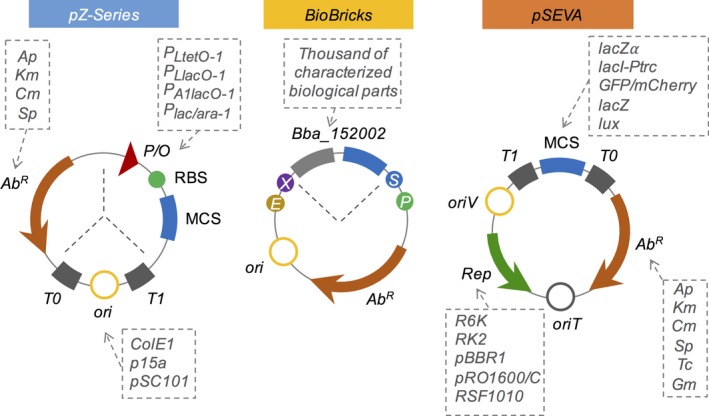Figure 3.

New generation of modular vectors. The pZ‐series represented remarkable progress in the new generation of vectors. In this set‐up, three modules are combined to generate a collection of vectors. In the original design, three narrow‐host‐range origins were combined with four antibiotic resistance markers and a few expression systems and reporters (Lutz and Bujard, 1997). In the BioBrick platform, a very interactive set‐up is used to assemble complex circuits by the joint of prefix and suffix fragments using only four restriction enzymes (Eco RI, XbaI, SpeI and PstI). This platform is merged with a collection of thousands of well‐characterized biological parts and is widely used by the iGEM community (Knight, 2003; Shetty et al., 2008). In the SEVA platform, broad‐host‐range origins of replication (represented by the oriV and Rep elements) are selected, allowing the replication of the plasmids in multiple Gram‐negative bacteria. This is combined with a number of antibiotic resistance markers and many functional systems at the MCS regions (some examples are shown in the figure). Another exclusive feature of this platform is the existence of a transference origin (oriT) to allow the mobilization of the plasmids to the target bacteria using conjugation (Silva‐Rocha et al., 2013).
